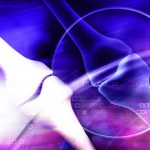Orexin is a critical, but previously unrecognized, rheostat of skeletal homeostasis. It functions centrally in the brain, via orexin receptor 2 (OX2R), to enhance bone formation. It also functions peripherally in bone, via orexin receptor 1 (OX1R), to suppress bone formation. The tension between these two functions provides a key to understanding how both the neuronal and endocrine systems control bone remodeling.
Wei Wei, PhD, a researcher at the Department of Pharmacology at the University of Texas Southwestern Medical Center in Dallas and colleagues published their detailed study of orexin in the June 3 online issue of Cell Metabolism.1
They began their investigation by examining orexin knockout mice and found that these mice have low bone mass and decreased bone formation. In these mice, the bone formation marker N-terminal propeptide of type 1 procollagen (P1NP) was 30% lower than in wild-type (WT) control mice, but levels of the bone resorption marker C-terminal telopeptide fragments of the type 1 collagen (CTX-1) were unchanged.
Orexin Receptor Knockout Mice
The investigators next asked whether the orexin regulation of bone mass is mediated by OX1R, OX2R, or both. Using cells from WT mice, they found that OX1R expression is suppressed during osteoblast differentiation, but elevated during adipocyte differentiation. They then looked to see whether OX1R inhibits bone formation in vivo. They found that OX1R knockout mice have high bone mass as a result of a shift in differentiation from marrow adipocyte to osteoblast. These mice also have significant up-regulation of ghrelin protein in their tibiae.
The investigators concluded that OX1R regulation of ghrelin expression occurs locally in the bone and the shift in cell differentiation is triggered by higher osseous ghrelin expression. In this way, OX1R suppresses osteoblast differentiation and bone formation. The results are consistent with OX1R being antiosteoblastogenic, but proadipogenic.
The investigators also examined osteoclastogenesis in the OX1R knockout mice. They found that the reduced bone resorption seen in these mice is mediated by a decreased receptor activator of NF-ҡB ligand (RANKL)/osteoprotegerin (OPG) ratio.
To better understand the complete role of orexin in bone metabolism, Wei et al investigated OX2R knockout mice and found low bone mass and decreased bone formation, suggesting that OX2R enhances bone formation. To test this hypothesis, they infused an OX2R-selective agonist (OX2R-AG) into the lateral ventricles of WT mice and reported remarkably enhanced bone mass in these mice after 35 days of treatment. Further, intracerebroventricular injection of OX2R-AG attenuated bone loss in ovariectomized mice.
